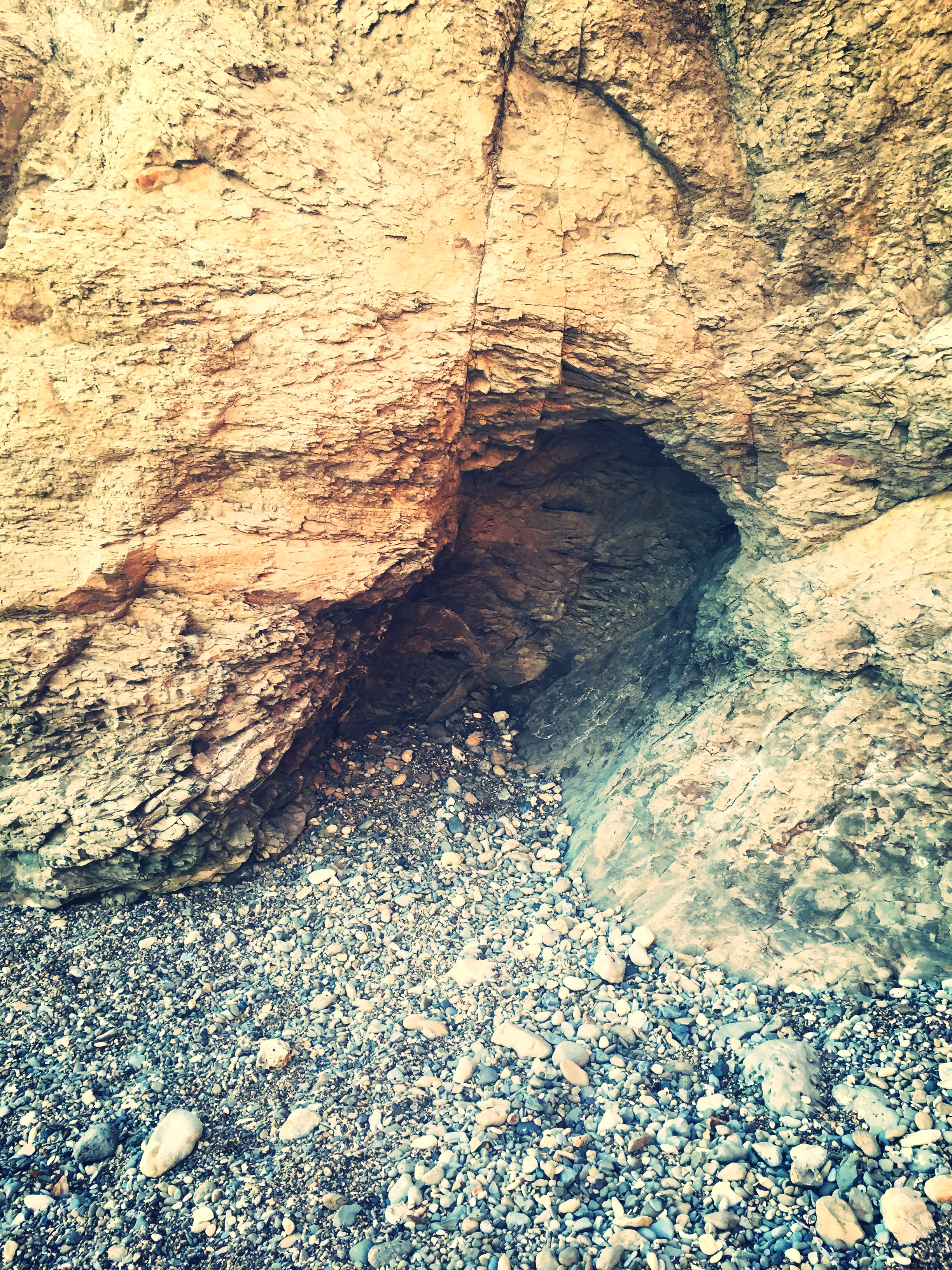Asexual Community Participation: How Often? Why? Why not?
Asexuality has been considered as the “invisible orientation.” (Decker, 2014) Research related to the asexual population has seemingly focused on the theoretical aspects of asexuality. However, there is a wealth of data available from the Ace Community Census that can be analyzed for more pragmatic purposes. Over the past decade, there have been numerous non-academic articles and online discussions where the inclusion of asexuals in the LGBTQ community has been debated. Recently, the Equinox Gym was under fire for releasing a short pride film entitled “LGBTQAlphabet: Six Letters Will Never Be Enough” because the A stood for “Ally.” Some LGBTQ groups are asexual-inclusive and may be places for asexuals to thrive, particularly if they are also another queer identity, such as homoromantic (Decker, 2014).
It would be fair to say that the asexual population is, at best, on the outskirts of the LGBTQ community. In the community-at-large, the asexual population still appears to be relatively unknown and without improvements to both the online and offline experiences, asexuals will continue to be marginalized in society.
It is estimated that approximately 1% of the population is asexual, according to a study of 18,426 individuals from England, Wales, and Scotland (Bogaert, 2004). However, it is reasonable to speculate that their prevalence has increased over the years. There are asexuals who remain hidden in the closet and this is due, at least in part, to difficulties being out among their family, friends, and the general public. One has to wonder if the online and offline communities that do exist are not only well-known to asexuals, but how welcoming are these communities?
There is debate online as to whether or not asexuals belong in the LGBTQ community, with those arguing against inclusion, in part, based on a lack of systematic oppression. For people who want to be accepted and welcomed for who they are, discrimination from the LGBTQ community is both ironic and troubling. Rather than use oppression as an indicator for inclusion, perhaps it would be best to use the fact that we are all human beings as the criterion for welcoming individuals to a place they can call home. The lack of a harmonious, welcoming environment only serves to further alienate the asexual population. Comparative victimization, in which groups may exclude others based, in part, on their level of real or perceived oppression, does no benefit to anyone.
With this in mind, asexuals may have to find asexual-only communities. Finding other asexuals may be difficult, particularly offline, where being out may not be considered safe. As asexuals continue to struggle to find inclusion in the LGBTQ community, they may be forced to stay isolated, perhaps not participating in any asexual community whatsoever. Prior research has dealt with asexual communities and sexual norms (Przybylo, 2011), but what about asexual communities as simply, a community? Some researchers feel asexuality is at odds with traditional gender roles and threatens the self-concept (MacNeela, 2015), and can make it difficult to relate to non-asexuals (Carrigan, 2011). However, regardless of our orientation, we are all human beings. We should be able to relate at that most basic level of our existence.
This research study will both quantify asexual community participation and identify the reasons why asexuals do or do not participate in communities, both online and offline. Knowing and understanding these reasons may help in the development of real-world methods that can be implemented to improve the experiences of asexuals in existing communities. It is also possible that new communities could be created based on data that is taken annually from the Ace Community Census. This, in turn, can create more awareness of asexuals, more inclusive communities, and build greater acceptance of asexuals in the general population. The long-term goals are to ensure that asexuals feel a sense of belonging in any community so that they may be more likely to come out of the closet and enjoy their lives.
METHODS
Data from the 2016 Ace Community Census, a survey completed by 9,870 individuals from around the world, was analyzed using Statistical Package for the Social Sciences (SPSS) Version 23. The 2016 Ace Community Census was a community research project by the Asexual Visibility and Education Network (AVEN) Survey Team. The survey, which took approximately fifteen to twenty minutes to complete, was open to anyone over the age of 13, including both asexual and non-asexual individuals.
Responses to specific questions as to why asexuals participate and do not participate in online and offline communities were analyzed and themes were determined and reported. Data specific to both online and offline community participation and frequency were assessed and reported by the label that respondents most closely identify.
RESULTS
The majority of respondents most closely identified with being asexual (64.5%) and considered their sexual orientation to be asexual (71.8%) (Table 1). The reasons for participation in communities listed in Table 2 are not exhaustive, but reveal the themes that were reported by numerous respondents. Additional comments included, but were not limited to, talking about topics other than relationships, an obligation to participate, sharing political opinions, reading posts, lurking, and keeping up with opinions.
The reasons for non-participation in communities listed in Table 3 are also not exhaustive but reveal numerous themes. Additional comments included, but were not limited to, disliking the tone or level of debate, not connecting with members of the group, not having much in common with others besides being asexual, drama, and bad posting rules in online communities.
While the majority of respondents had met someone offline that was asexual, gray-A, or demisexual (Table 4), fewer than 20% participate in offline asexual groups. Of these participants, just 3.2% of questioning individuals and 8.0% of asexual individuals participate at least once per month in an offline group. In offline LGBTQ spaces, experiences tended to be positive among those who provided an actual ranking (Table 5). However, there was considerable variance in feeling the most recent offline LGBTQ space they participated in was intended for them, particularly among asexuals, as 511 of 3,350 (15.2%) reported “Not at all.”
For online communities, Tumblr was the most popular for asexual participation. Reading or watching content was most common in Tumblr, followed by AVEN, YouTube, and Facebook (Table 6). Posting or commenting in online communities was most common in Tumblr and Facebook.
DISCUSSION
One of the questions in the Ace Census asked respondents for reasons why they currently participate in asexual communities (both online and offline, where applicable). While there were responses they could have checked (to find people like myself, to learn more about myself or asexuality, to be an advocate, to talk about asexuality, to have general discussions, to find friends or partners, N/A – I do not participate in asexual communities); several respondents decided to write in their own specific reason(s) by the “Other” option.
There are many reasons why asexual individuals reportedly do or do not participate in online and/or offline groups (Table 3). Asexual individuals want to be part of a community where they feel safe, validated, are respected, and have a voice. Online and offline communities can be a place for support, friendship, discussing experiences, asking questions and seeking advice, social activities, happiness, and raising awareness of asexual individuals and their rights.
However, fear of outing oneself, age differences, familial disapproval, discrimination, harassment, infighting, unwelcoming communities, lack of nearby groups, and uncertainty of finding asexual communities are just some of the many reasons why asexual individuals in this Census do not participate in online or offline groups.
One of the strengths of this study was analyzing the Ace Community Census data collected from 9,870 respondents from around the world. Being an online survey, it may skew the responses to those more familiar with using the Internet, which tends to be younger individuals. The mean age of respondents was 23.1 years and 95% of the study population was age 36 or younger. The ages ranged from 13 years to 109 years.
With this research, evidence-based improvements can be made to existing online and offline communities and new communities can be created that best reflect the findings from this census. Among adult asexuals, there may be a fear of meet-ups with asexuals under the age of 18. The inclusion of more age-specific discussion forums, similar to what AVEN provides online, would be a helpful method of connecting similar-age asexual individuals. Online posting policies could be edited to better create a welcoming community sent to current and new members. This action, along with diligent post moderation, could be implemented to improve the online experience and maintain a more civil, respectful, and accepting environment.
It is fair to state the asexual population is a minority within the LGBTQ+ community. Though asexual awareness has improved over the past couple of decades, the asexual population still struggles to connect with each other, while also finding their acceptance in society. Future research efforts should focus on a more practical, evidence-based approach to addressing the issues facing the asexual population.
REFERENCES
Decker, J.S. The invisible orientation: An introduction to
asexuality. 2014. Skyhorse Publishing, New York, NY.
Bogaert A.F. (2004). Asexuality: prevalence and associated
factors in a national probability sample. The Journal of Sex Research, 41, 279-287.
Przybylo, E. (2011). Crisis and safety: The asexual in
sexusociety. Sexualities, 14, 444–461.
Gupta, G. (2017). “And now I’m just different, but there’s
nothing actually wrong with me”: asexual marginalization and resistance. Journal of Homosexuality, 64, 991–1013.
Carrigan, M. (2011). There’s more to life than sex? Difference
and commonality within the asexual community. Sexualities, 14, 462–478.
MacNeela, P, Murphy, A. (2015). Freedom, invisibility, and
community: a qualitative study of self-identification with asexuality. Archives of Sexual Behavior, 44, 799–812.
Table 1. Demographic Characteristics of Ace Census Population
Which of the following labels do you most closely identify with?
Identity N %
Asexual 6,367 64.5
Gray-A 1,063 10.8
Demisexual 848 8.6
Questioning if asexual/GrayA/ 1,054 10.7
None of the above 538 5.4
Total 9,870 100.0
Sexual Orientation
Orientation N %
Asexual 7,067 71.8
Gay 109 1.1
Lesbian 218 2.2
Pansexual 354 3.6
Queer 1,044 10.6
Straight 608 6.2
Bisexual 447 4.5
Missing 23
Total 9,870 100.0
Table 2. Reasons for Participation in Online and Offline Asexual Communities
Acceptance
Ace humor
A way to remind myself it is ok to be ace.
Ask questions and seek advice from other aces.
Be able to better defend myself against harassment.
Belonging
Clear misconceptions about non-ace people and sexual attraction.
Coping
Discuss alternative definitions to asexuality.
Ease anxiety.
Feels like coming home.
Friends
Fun
Happiness to meet other people like myself.
In hopes that younger people will figure themselves out sooner than I did.
Learn about the evolving conceptualization of sexuality.
Participate in educational dialogue with non-ace people.
Positivity
Safe place
Social activities
Spread awareness in the LGBTQ community.
Support
Talk about gender
Talking about personal experiences.
To be comfortable in my own skin.
To be in an asexual-positive environment.
To be informed enough to treat others who identify as asexual in a relatively informed manner, in order to be a more kind and decent person.
To be part of a community.
To be visible so that other aces know they are not alone.
To encourage aces to create their own community that suits their needs.
To feel normal.
To help individuals and offer advice.
To help my friends with understanding.
To not feel alone.
To stand up for our rights and the rights of all other LGBTQA+ people.
To talk about aces in LGBT spaces.
To talk about relationships.
To vent my frustrations over ignorance about asexuality.
Trust
Understand why people have problems with asexuality.
Validation
Table 3. Reasons for Non-Participation in Online and Offline Asexual Communities
Afraid as a demisexual that I am not ace enough.
Afraid friends or relatives would find out and out me.
Afraid of outing myself.
Afraid of the impact it might have on my partner.
Age
Age group seemed too young for me.
Asexual elitism
Being called “it”.
Busy
Cannot drive.
Depend on others for money and transportation.
Depression
Did not consider asexuality to be a part of the LGBTQ community.
Did not know there were any communities.
Family disapproval and prejudice.
Fear of ace discrimination.
Feeling the need to prove I am ace.
Going to new places and meeting new people is scary.
Group is far away.
Happily closeted.
Harassment from non-asexuals.
Have not come out yet.
Have not found a suitable community.
Have not looked.
Homophobia.
I am quite old now and used to being in the closet about everything towards everyone.
I do not feel the need to be in a community.
Infighting between various populations of the asexual spectrum.
Introverted
LGBT community not welcoming.
Like observing more than participating.
Negative discourse
Non-ace people kept causing trouble.
Online site “ace discourse” made the ace community contentious and unsafe.
Online site filled with people disagreeing with asexuality.
Religious reasons.
Shame
Shyness
Social anxiety
The vibe turned me off.
Too much hate and toxic discourse.
Unsure about identity.
Unsure where to find ace communities.
Worried it would affect my career.
Table 4 – Meeting Others and Participation in Offline Asexual Groups
Have you ever met someone offline who identified as asexual, gray-A,
or demisexual that you know of?
Asexual
N (%) Gray-A
N (%) Demisexual
N (%) Questioning
N (%) None of the Above
N (%) Total
Yes 3,954 (62.2) 698 (66.0) 575 (67.8) 507 (48.4) 397 (74.9) 6,131
No 1,910 (30.0) 253 (23.9) 192 (22.6) 400 (38.2) 80 (15.1) 2,835
Unsure 491 (7.7) 106 (10.0) 81 (9.5) 140 (13.4) 53 (10.0) 871
Total 6,355 1,057 848 1,047 530 9,837
Missing 33
How often do you currently participate in offline asexual groups?
Asexual
N (%) Gray-A
N (%) Demisexual
N (%) Questioning
N (%) None of the Above
N (%) Total
Never 5,071 (80.0) 876 (82.9) 712 (84.4) 943 (90.8) 454 (88.0) 8,056
Few times a year or less 752 (11.8) 115 (10.9) 89 (10.5) 61 (5.9) 39 (7.5) 1,056
Once a month 179 (2.8) 24 (2.2) 11 (1.3) 9 (0.8) 4 (0.8) 227
Few times a month 223 (3.5) 28 (2.6) 22 (2.6) 21 (2.0) 7 (1.3) 301
Few times a week 82 (1.3) 10 (0.9) 8 (0.9) 3 (0.3) 10 (1.9) 113
At least once a day 29 (0.4) 3 (0.3) 1 (0.1) 1 (0.1) 2 (0.4) 36
Total 6,336 1,056 843 1,038 516 9,789
Missing 81
Table 5. Experiences in Offline LGBTQ Spaces
How was your experience in the most recent offline LGBTQ space you participated in?
Asexual
N Gray-A
N Demisexual
N Questioning
N None of the Above
N Total
Negative 137 26 26 21 13 223
1 156 43 24 22 15 260
2 477 82 64 67 38 728
3 821 178 117 119 97 1,332
Positive 1,473 249 213 205 179 2,319
NA 3,303 485 404 619 196 5,007
Total 6,367 1,063 848 1,053 538 9,869
To what degree did you feel that the most recent offline LGBTQ space
you participated in was intended for you?
Asexual
N Gray-A
N Demisexual
N Questioning
N None of the Above
N Total
Not at all 511 91 76 76 32 786
1 573 121 75 77 37 883
2 756 130 105 95 61 1,147
3 589 113 79 89 87 957
Mostly 621 121 113 95 119 1,069
NA 3,317 487 400 621 202 5,027
Total 6,367 1,063 848 1,053 538 9,869
Table 6. Reading, Watching, Posting, and Commenting on Online Sites
How much do you currently read or watch content from …?
Site Never Few times a year or less Few times a month Few times a week At least once a day NA Total
AVEN 4,308 3,528 1,138 375 109 412 9,870
Non-English asexual forum 8,493 446 174 89 31 637 9,870
Tumblr 1,615 1,283 2,009 2,639 2,055 269 9,870
Livejournal 8,554 516 140 23 7 630 9,870
Blogs (excl. Tumblr and Livejournal) 6,950 1,333 752 211 57 567 9,870
Facebook 5,870 1,145 1,010 812 546 487 9,870
Twitter 7,166 818 751 405 189 541 9,870
Reddit 7,891 639 410 259 98 573 9,870
Youtube 5,020 2,419 1,439 410 97 485 9,870
Meetup.com 8,878 227 138 27 5 595 9,870
Chat room 8,540 370 172 103 96 589 9,870
How much do you post or comment in …?
Never Few times a year or less Few times a month Few times a week At least once a day NA Total
AVEN 8,379 748 178 66 46 453 9,870
Non-English asexual forum 9,121 141 72 15 4 517 9,870
Tumblr 5,041 1,970 1,514 745 244 356 9,870
Livejournal 9,207 84 19 3 0 557 9,870
Blogs (excl. Tumblr and Livejournal) 9,028 210 78 18 8 528 9,870
Facebook 7,663 906 565 197 61 478 9,870
Twitter 8,403 506 279 127 43 512 9,870
Reddit 8,903 303 109 27 5 523 9,870
Youtube 8,794 403 121 35 6 511 9,870
Meetup.com 9,145 120 45 6 0 554 9,870
Chat room 8,833 204 115 83 74 561 9,870





